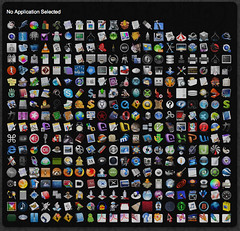
This is the third post in my series on The Impact of Generic CRM Systems on the Fundraising Database Market.
In part one of this series, I discussed the potential benefits and issues of these systems. But I deliberately left out two of the most key questions: how long will it take to implement the systems? And how does cost compare to dedicated fundraising databases?
The reason I decided to address these points in a separate post is partly because they require more dedicated consideration but also because they are, understandably, two of the more contentious factors for suppliers from both sides of this fence. Suppliers of dedicated (“traditional”) fundraising databases will of course say one thing and the new generic CRM suppliers will say something else.
So this is my attempt at a fair appraisal of the two approaches. I have no doubt that people will want to agree or disagree – that’s fine, please do so constructively in the Comments below! – and I have no doubt that there will be genuine reasons as to why some of my arguments may be quite rightly challenged in some instances, but hopefully they will give charities and NFPs a better understanding of the sorts of things they need to consider.
And the bottom line, as with any database for any industry, is that there are so many variables in any CRM implementation that there is no one answer – in fact, if you were to ask me point blank, how much will it cost, then “it will depend” will be my most common answer. And it
will depend - on everything from functionality required and breadth of data you want to store, to the size of your organisation and your in-house skills.
Bear in mind also that most my points below are mostly true for the “mid-size” NFP, which many charities will indeed fall into. For large charities, the implementation costs and time are going to be high regardless of whatever sort of solution you go for, and for small NFPs, there are amazingly low-cost fundraising packages or you may be able to implement a new CRM system quickly with very low implementation costs.
However, here goes nothing for giving you my views…
Cost
The reason it can be difficult to compare the cost of dedicated fundraising packages and the new CRM systems is because we have to remember the Total Cost of Ownership (TCO) for any procurement – i.e. it is not just the initial cost of the software which you must pay, but everything else: implementation, configuration, consultancy, training, data migration, third-party software, hardware/hosting, database/web integration, on-going support, even internal support needs. And much, much more. (I have published a document on Slideshare which looks at
How to consider all costs in CRM procurement).
But the main difference in cost structures between the two types of system is that the dedicated fundraising package will (generally) have higher software license costs (i.e. cost per user) but because the fundraising functionality is already built-in, many implementations will not require much additional development or implementation work.
Whereas, with the new CRM systems, the basic software licenses of the CRM software itself can be extremely cheap (even free for open source systems such as SugarCRM or for 10 licenses from the Salesforce Foundation), although you also need to be aware of the on-going annual costs of not just the CRM system itself (i.e. Salesforce, MS CRM etc) but also of any third-party apps or 'templates' you use. Such costs can start to add up. However, the good thing about those is that you (usually) only need to buy a license for each app for just the number of user(s) who will be using them. e.g. Even if you have, say, 10 users overall on the database, if you have an email marketing app and only 2 people need to use it, then you may well only need to pay for a 2 user license for that app. (It's interesting to compare such annual costs with the annual support/maintenance costs of the 'dedicated' fundraising databases - depending on your requirements, they might not always be so wildy different...)
However, the main cost for these generic CRM systems will come in the implementation: and all the discovery work, spec documents, configuration/development and associated costs with all that. Even for the “templated” versions, they will either have a cost for the template and/or will still require additional work on top of them.
Unfortunately, it may be especially hard during a procurement to know the implementation costs of the generic CRM systems, because, whereas with dedicated fundraising packages, almost all suppliers will be able to give the “average size” charity a fixed cost or pretty-near estimate at an early(ish) stage, because CRM system by their definition will need more configuration, it may be more difficult for suppliers to give such accurate (or even ball-park) figures. They are more likely to need to do more work with your charity before they can provide such costs, and sometimes that discovery or feasibility work will be chargeable.
And for these reasons too, the 'explicit' cost of implementing a CRM system in particular, could be far lower if you don’t use a third-party supplier – all you have to do is buy the licenses and off you go. Of course, it isn’t quite as simple as that – there will be all sorts of other 'implicit' costs and different risks doing it in-house and someone in your organisation will still have to implement the system: design it, configure it, support it and so on. And there will of course therefore be an implicit cost in doing that.
Speed of Implementation
In theory, a fundraising package with all its pre-defined fundraising functionality, could be implemented quite quickly for the “average charity”. Of course, you will still need to consider business processes, have consultancy, do data migration, be trained and so on. But if you don’t need much changing from the standard system, then the time constraints can more often be your own internal resources as much as the supplier’s.
For generic CRM systems, it is extremely likely that you will need some configuration and bespoke work done on them, and as I’ve said already, even if you start with a templated version. And if you start with the vanilla version, then you will definitely need such time. Of course, again, some of this will be the same as per fundraising packages: the need for consultancy, reviewing business processes and so on. But the difference is likely to be that, after any initial consultancy on your requirements, even if you need standard fundraising functionality such as Gift Aid, then on a vanilla CRM system this will need to be configured or programmed by your supplier.
And thus we can see immediately that this will of course impact on costs…
All that said, for generic CRM systems, for simple fundraising requirements, where a supplier can provide a templated solution or integrate with appropriate third-party apps for that CRM system, it may well be that implementation timescales can be brought down. (In the same way that dedicated fundraising packages will have such functionality built-in…!)
Sitting on the Fence
I know that, to a degree, I am sitting on the fence in terms of giving you an answer to such a critical question. But as I said above, this is because there is no simple answer! And every procurement and implementation will be anything from slightly - to very - different. The point is, if you are going to buy a new system, then you need to understand and consider the different approaches and why it isn’t as simple as any supplier telling you that they can do it best because dot dot dot.
Do remember Total Cost of Ownership and do remember to compare like-with-like as much as you possibly can.










